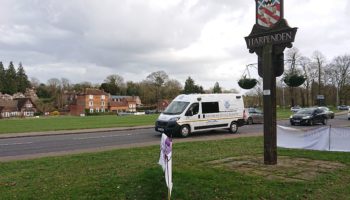Is Demand-Responsive Transport too expensive? In this series of articles, we suggest to deconstruct misconceptions about Demand Responsive Transport (DRT) and shared mobility. Misconception #2: “DRT is a financial drain”.
Some mobility stakeholders are reluctant to set up a dynamic DRT service, fearing its cost, which is considered exorbitant. Beware of abusive shortcuts!
Get the upstream Demand right
Before launching a DRT service, it is preferable to carry out an upstream study, as each territory has its own mobility logic. Workshops with elected representatives, users, local stakeholders to identify needs, expectations and an “acceptable” level of the offer (adequate pricing, number of dedicated vehicles, number of trips offered, etc.). Then, it is preferable to test the system and its dimensioning through a renewable public contract, collecting as much data as possible on the service organisation and operations.
Take advantage of the versement mobilité (France)
The challenge is to control expenditure by optimising the grouping of itineraries. Local authorities can compensate for part of this by deducting a portion of the versement mobilité des entreprises. Since the new French Mobility Act (LOM), it has become the missing financial instrument for the DRT. It provides the opportunity to improve DRT services by investing in digital tools to facilitate demand and speed up bookings.
The versement mobilité may even cover the entire operating cost. The Pays de Saint-Omer Urban Community, which devotes 490,000 euros per year to its rural DRT operations, is “reimbursed in full by the versement mobilité“, according to Marc Thomas, its transport Vice-President (La Gazette des communes, 2020).
Compare what is comparable
Smart and dynamic DRT often replaces or optimises “classic” DRT services. The importance of DRT configuration in its cost is often underestimated. Badly optimised, badly pooled, badly promoted, it can indeed prove to be out of price. The gains resulting from a better configuration, with the right tools, are enormous. In Orleans, the adoption of Padam Mobility solutions enabled the operating costs of the Résa’Tao service to be reduced by around 30%.
Thought of as an intermodal service or as a feeder service towards existing lines, dynamic DRT makes it possible to increase the capacity of the DRTs it modernises while extending the offer, often in sparsely populated areas. Since the entire network benefits from it, its cost should be analysed at the overall network level.
Do not forget that the transportation industry remains a highly subsidised one
Like the rest of public transport, DRT is heavily subsidised. The user pays only about one-third of the cost of the transport operations. This on-demand public service is therefore not intended to be profitable. Less dense, more difficult to serve, the areas it covers are the least profitable. It is therefore a real political and social choice that targets isolated populations with no means of transport.
These articles may interest you:






